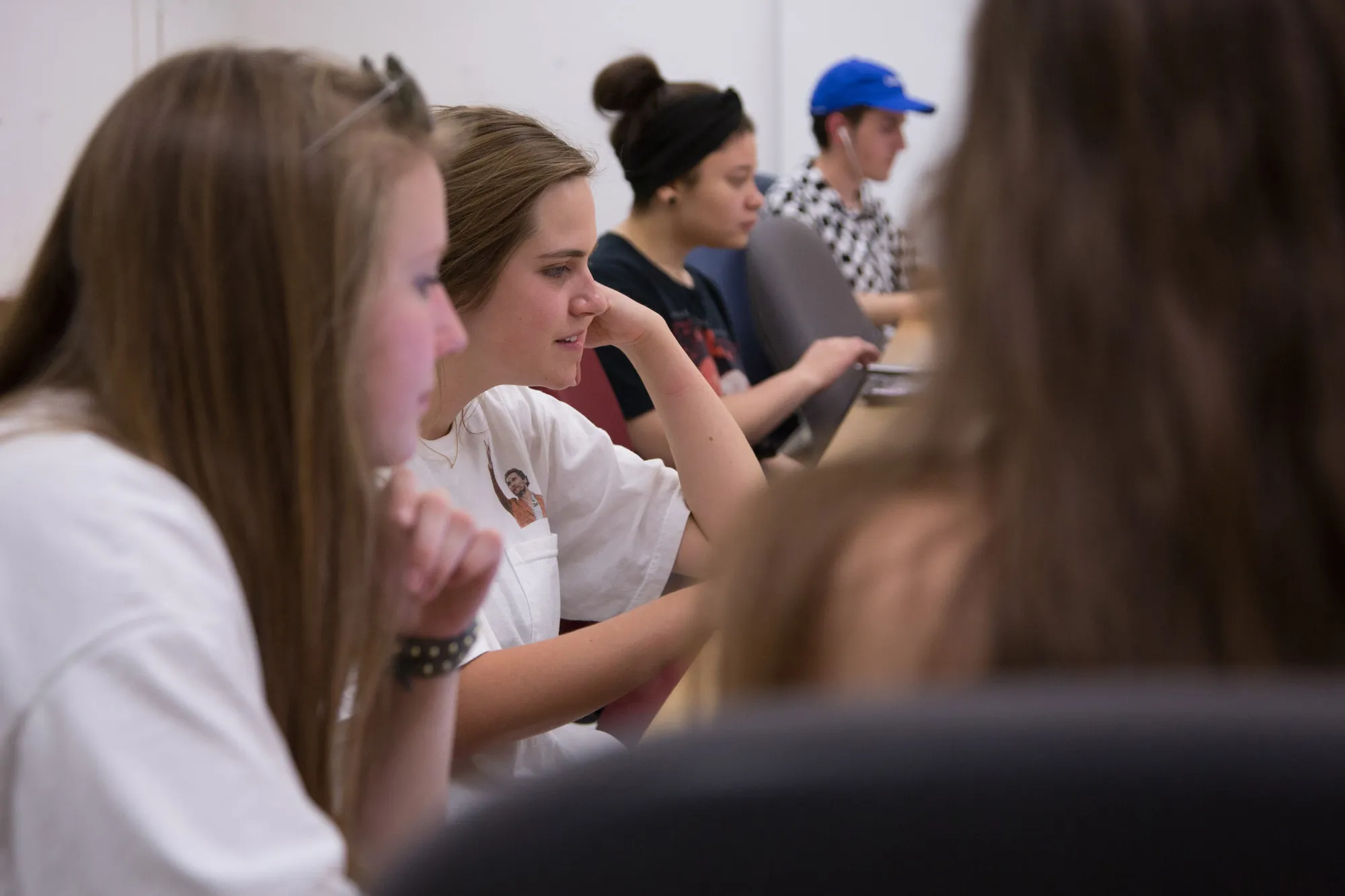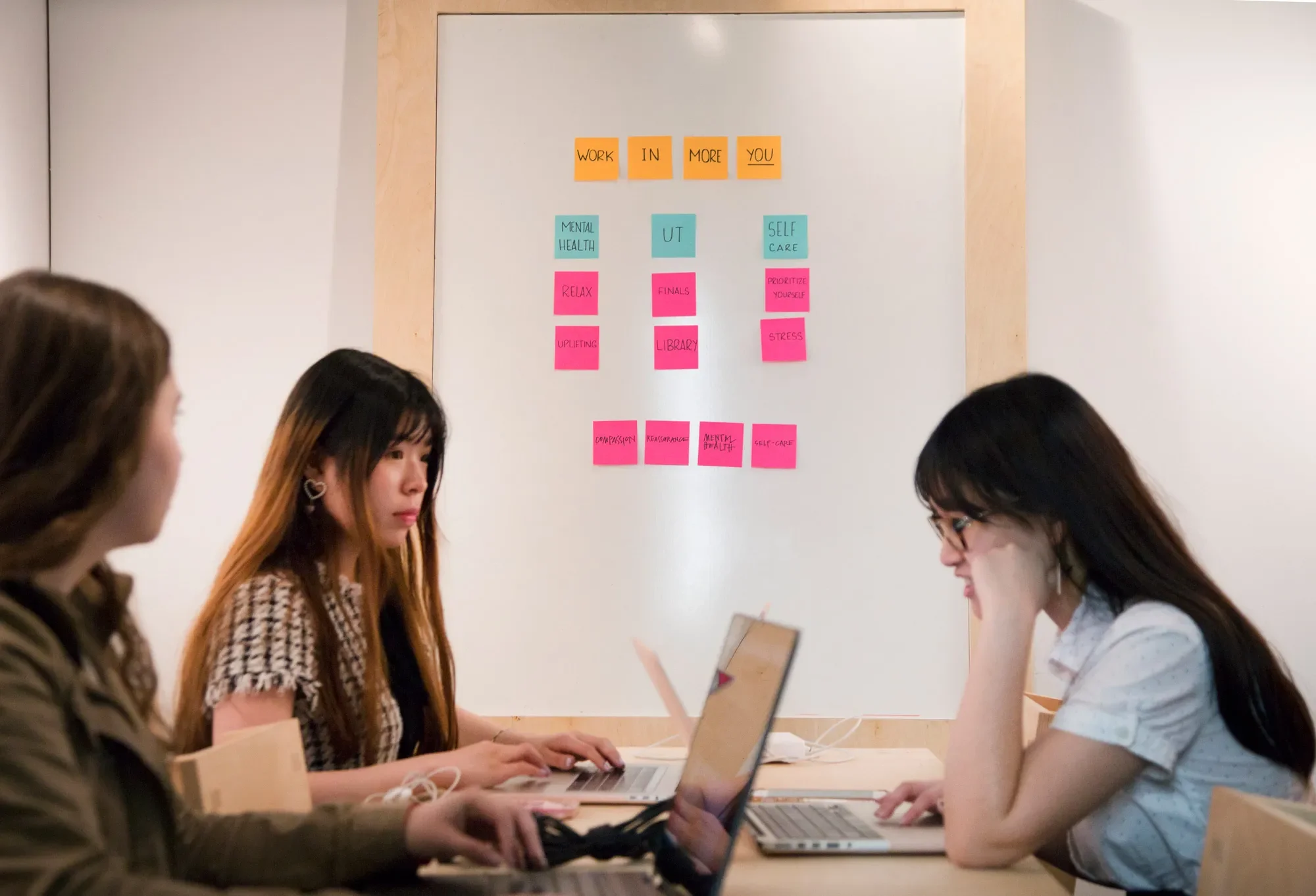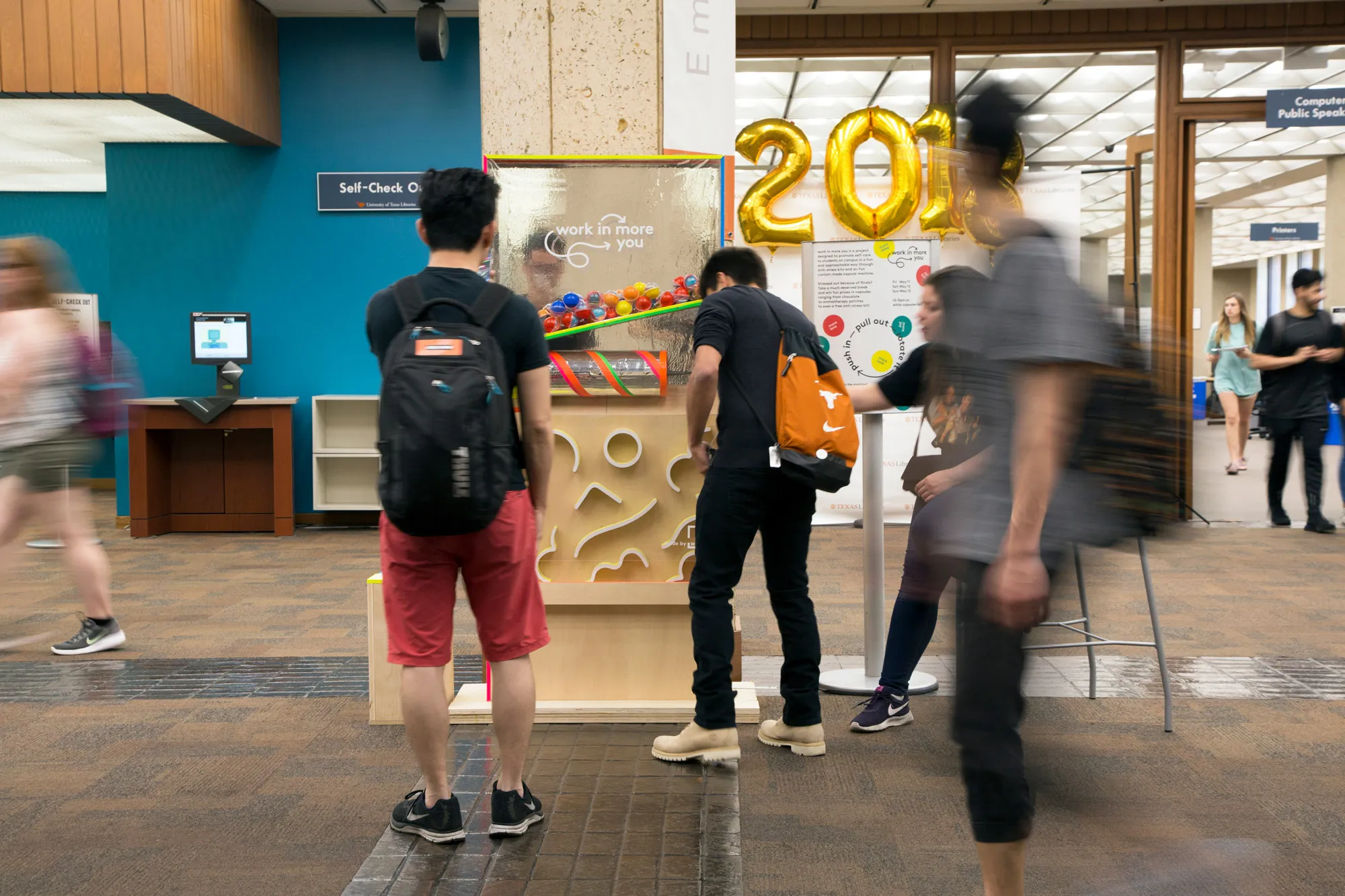The Working Class
A student-run design agency preps for post-college life.
Words and photos by Jen Reel
The words “real world” are often thrown at students to describe life after college, but that’s a bit of a misnomer. It’s probably a little insulting, too. Their world must feel undeniably real already—just ask them about their deadlines and stress levels.
What we’re trying to say is that it will be different, particularly their working lives. Instead of instructors and classmates, they’ll have bosses, clients and co-workers, and what they create will be judged by people expecting expertise, not instructors evaluating growth. The transition can be intimidating and feel uncertain, which is why wkrm (pronounced “work room”), the student-run design agency in the College of Fine Arts, was created.

***
It’s 5:30 p.m. on a Monday in the Art Building, and students are gathering in a lab room affectionately known as “The Cave,” where they’ll work on projects for the next three hours. Assistant Professor of Design Jiwon Park arrives with pizza and reminds them of their deadlines—only a few weeks left in the spring semester, and they still need to finish their client work and their self-realized project. Are they on track? Are they running into any issues? They break off into groups and huddle around their computers, while a few students slip down the hallway to the wkrm studio.
The studio is a small (292 square feet), windowless space with exposed ductwork and a sharply angled ceiling from the stairs above that hint at its former life as a supply closet. Back in 2015, Park pitched an idea for a lab that students could apply to join—an instructor-led, student-run, full-service design agency that would produce work not just for course credit, but clients, too. Her proposal was accepted, and Park was given a $2,000 budget for materials and the closet space to use. She accepted applications from students across campus and soon had an inaugural group of 11 students, from both design and business, tasked with starting an agency. By pooling their skills under Park’s leadership, they formed specialty teams and did extensive research and planning, built their own furniture, drafted business and marketing plans, brainstormed their name and designed their logo, swag and a website. Wkrm was born.

***
“I do think in a way that wkrm really got me this job,” says alumna Nora Green (B.F.A., Design, 2017), when talking about her position as a junior designer for a health communications company in Washington, D.C. Green was a founding member of wkrm and part of the branding team. She also took the course four times, each time receiving credit.
“I originally loved the idea of being the founding class that gets to develop this thing that’s going to live on, that’s going to continue to produce bodies of work for actual clients, but then I just kept taking it because it was helping me grow so much as a designer.”
Green and her teams worked on projects for nonprofits around Austin and units within UT, including Austin Pets Alive and the UT System Office of Health Affairs. The students also worked on self-made projects Park required to challenge them to push their creativity without the restrictions of client demands. Green says working in wkrm taught her how to build relationships, ask the right questions and meet deadlines, and she even took on internships with some of the clients she worked for through wkrm.
“In design class you turn in that final project, get feedback and that’s that. It’s really up to you whether you want to put in that extra time to finesse it for your portfolio. With wkrm, we get feedback and then have to implement those changes because that’s what we’ve promised this client.”
She also says that learning to build an agency helped her navigate freelancing after graduation by taking the mystery out of how to market herself and how to create her own personal brand. Park’s creative process and approach to building client relationships taught Green invaluable lessons.
“When I was imagining how it would look to have my own design studio, I thought I could do anything I want,” says Park, who started a design studio in South Korea at age 23. “But I had no experience in managing the company, no experience on the business side at all. A lot of it was trial and error. Today’s rapidly changing industry demands that design students possess a broad base of professional experience, skills and entrepreneurship. Wkrm was founded to provide students with those things.”

***
Back in the studio, a handful of students are gathered around their work space. Although they’ve completed their client projects, a T-shirt design for Notley Fund and a 3D room design for Genesis Program, there is still some work to do. Junior design major Kathy Vong and her teammates are adding final touches to the group project for their mental health awareness campaign, “Work In More You.” Vong is the campaign manager, and the team decided to create something interactive to help students cope with stress during finals and remind them to take care of themselves. They started an Indiegogo campaign to raise funds for supplies, and Vong and the crew were finishing the rewards kits for donors.
Items such as tea, stress balls, fortune cookies, essential oils, chocolate and a mini-coloring book were included with stickers and cards and messages, all designed by the product production team. These kits required a huge amount of work and were indicative of the amount of effort the team put into the rest of their interactive campaign.

Across campus in the Perry-Castañeda Library, Mailei Schmidt is monitoring the interactive installation they built for the project. Led by Dani Muñoz, the team used the wood shop to build an impressive vending machine, complete with a crank arm that dispenses colorful capsules through a maze of wood cuts before landing on the words “You got this.” The capsules are filled with various items from the Indiegogo kits, and the wkrm team strategically chose the library location, knowing students would be there studying. Many passing students pause to stare at the machine, visibly apprehensive but intrigued after someone steps forward and tries it. Schmidt encourages them, and soon a small group is gathered around, comparing and sharing their treats.
“This past year has been a really hard time on campus. A lot of things have happened, and finals add to that stress,” says Vong. “These are little bits of joy in people’s day, and that makes me happy.”

Kate Bomar, a third-year architecture and architectural engineering student, and Michelle Nguyen, a psychology and pre-med major, take their turns at the machine.
“I think a lot of the mental health pushes have been online and on social media, but it’s a lot more important to have physical spaces like this to make you remember it. When you see something on social you’re just scrolling through, you might not pay attention to it, but when you have a patch of lavender ... this is something I’ll probably carry around for a week,” says Bomar.
“And showcasing the design and these students’ capabilities is a great idea. How can I find out more about applying to this wkrm thing?”

